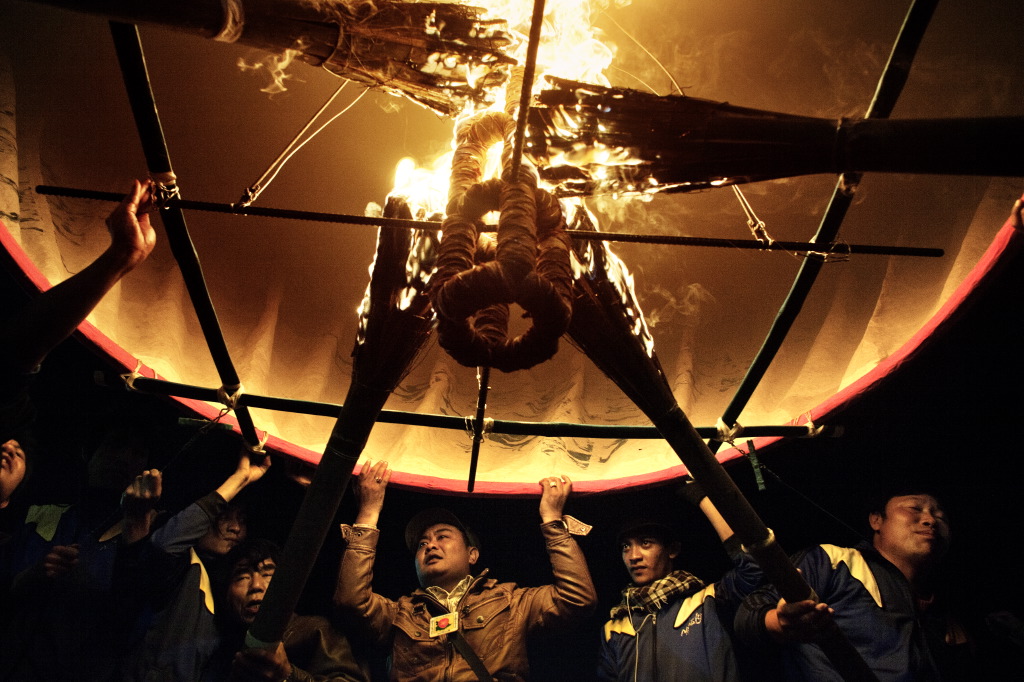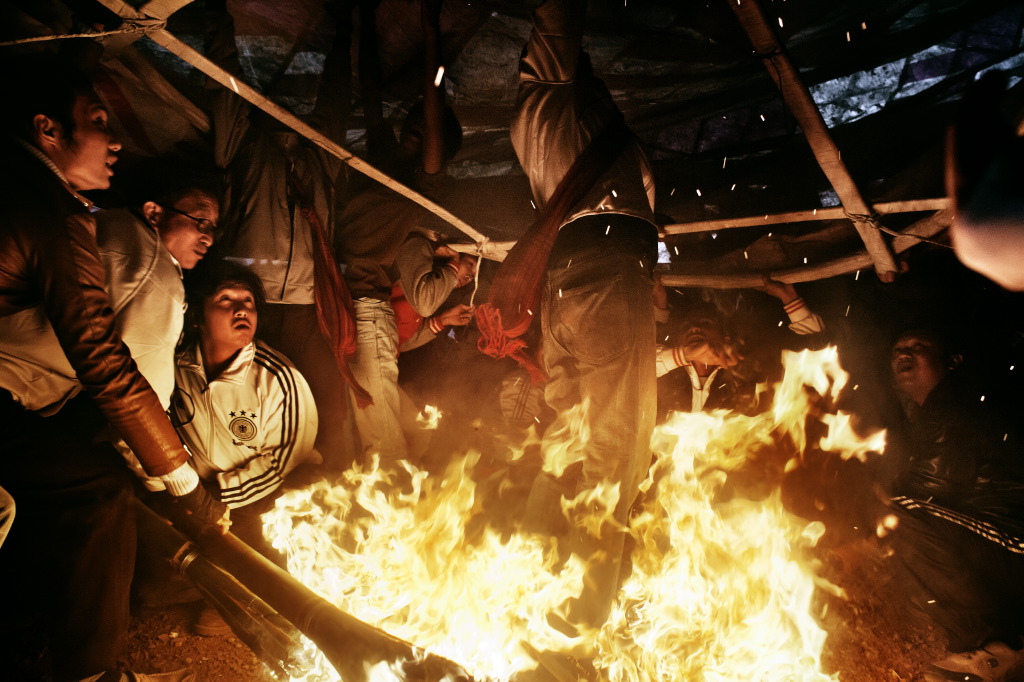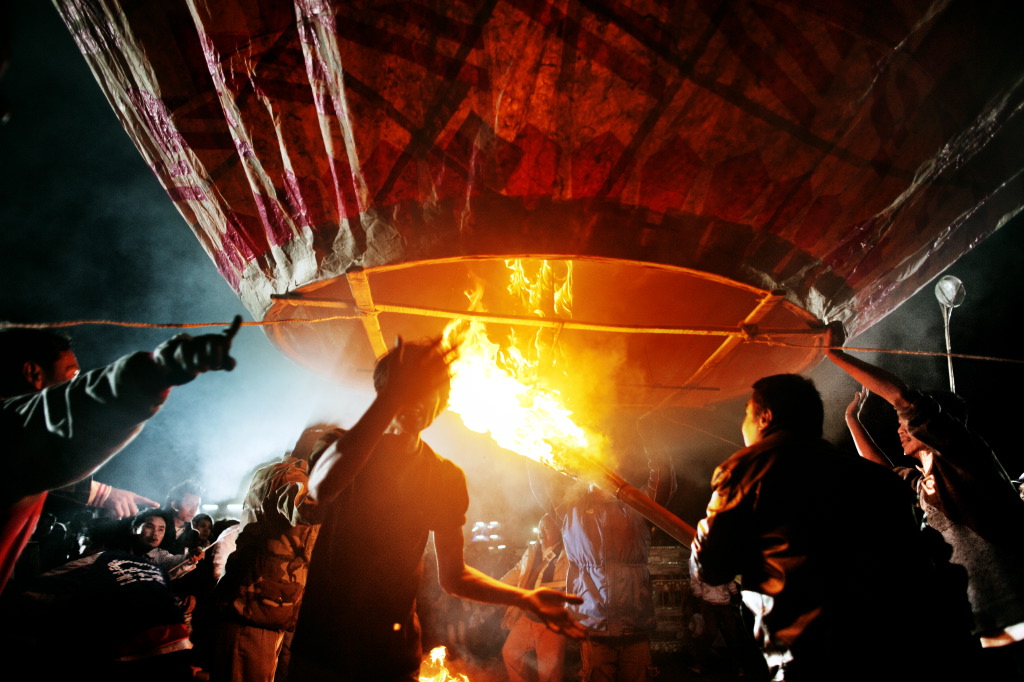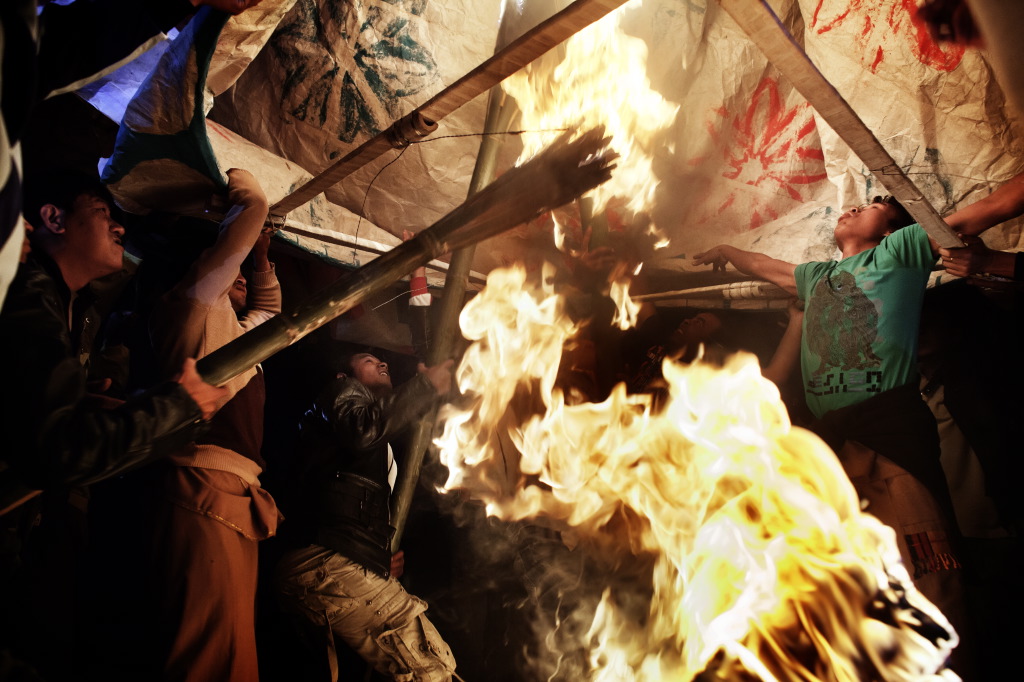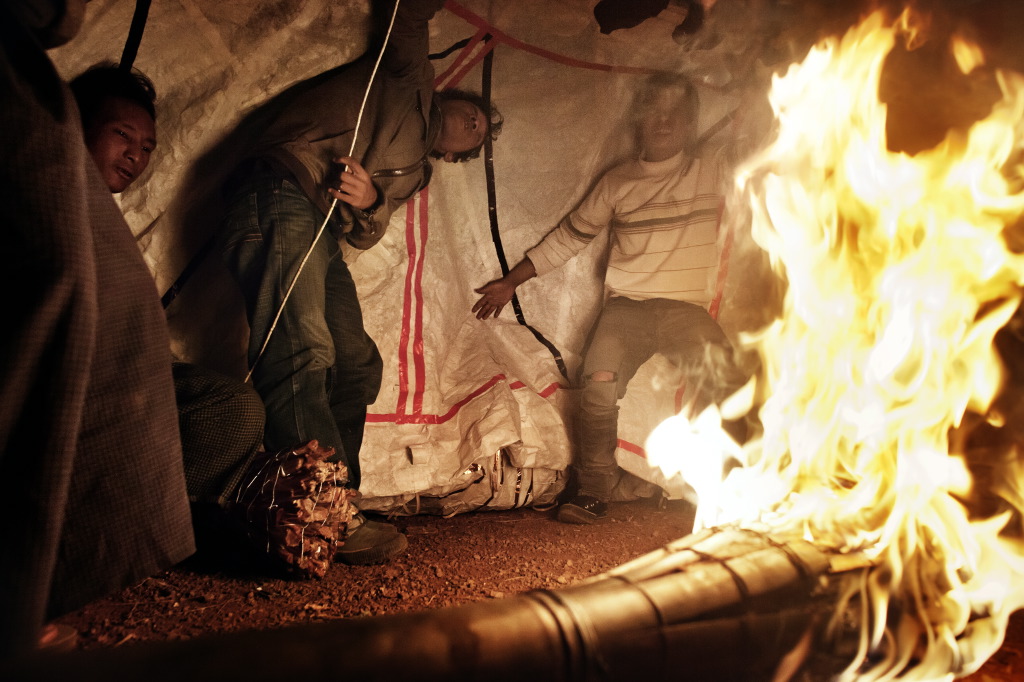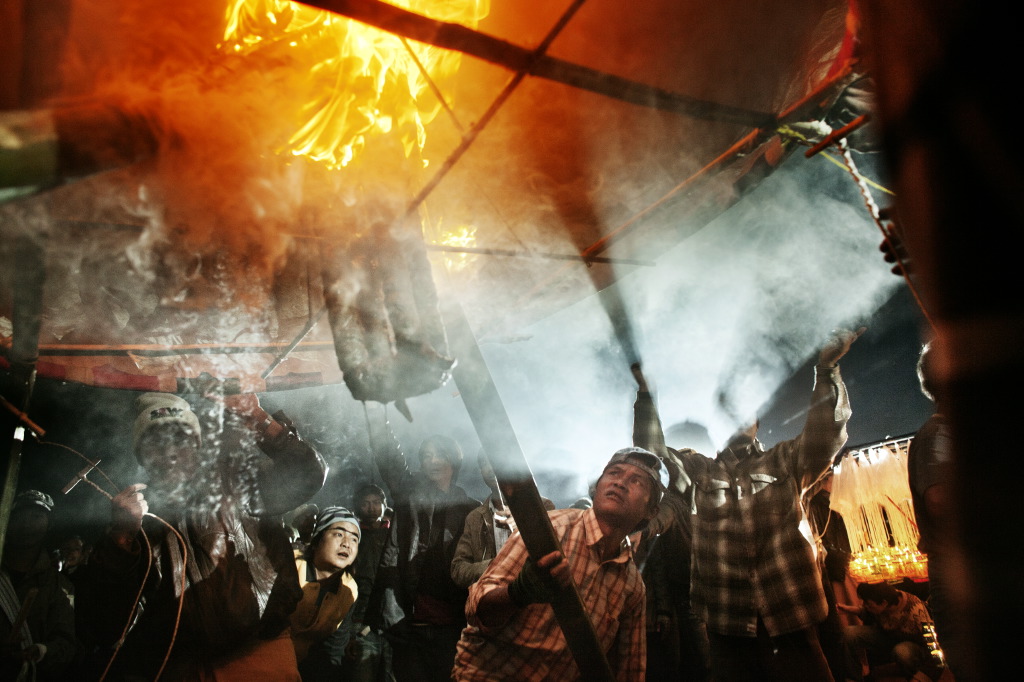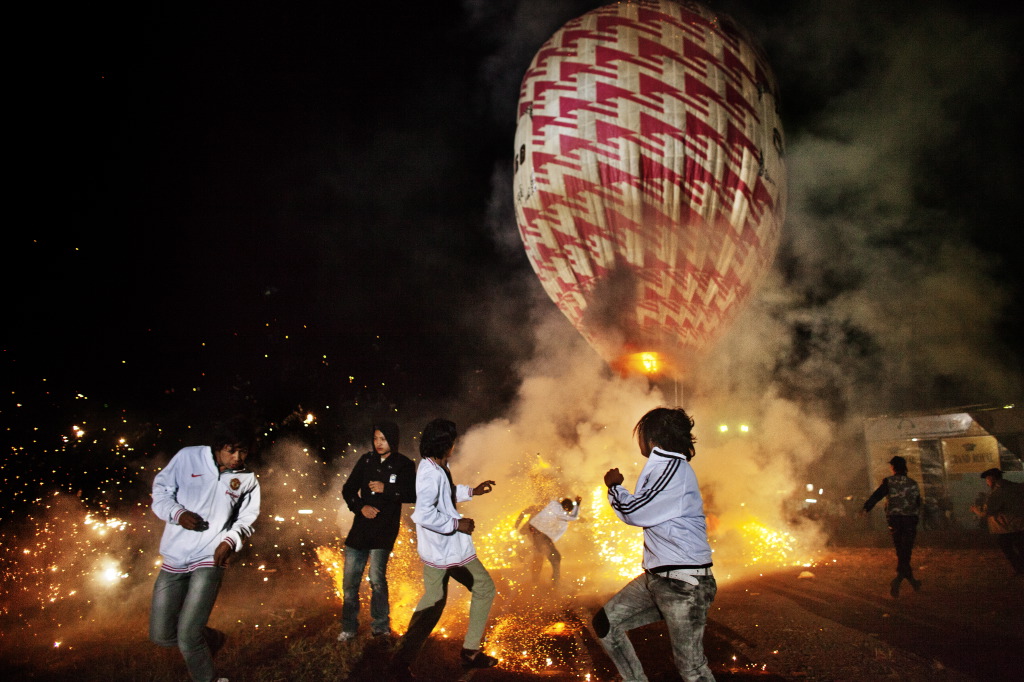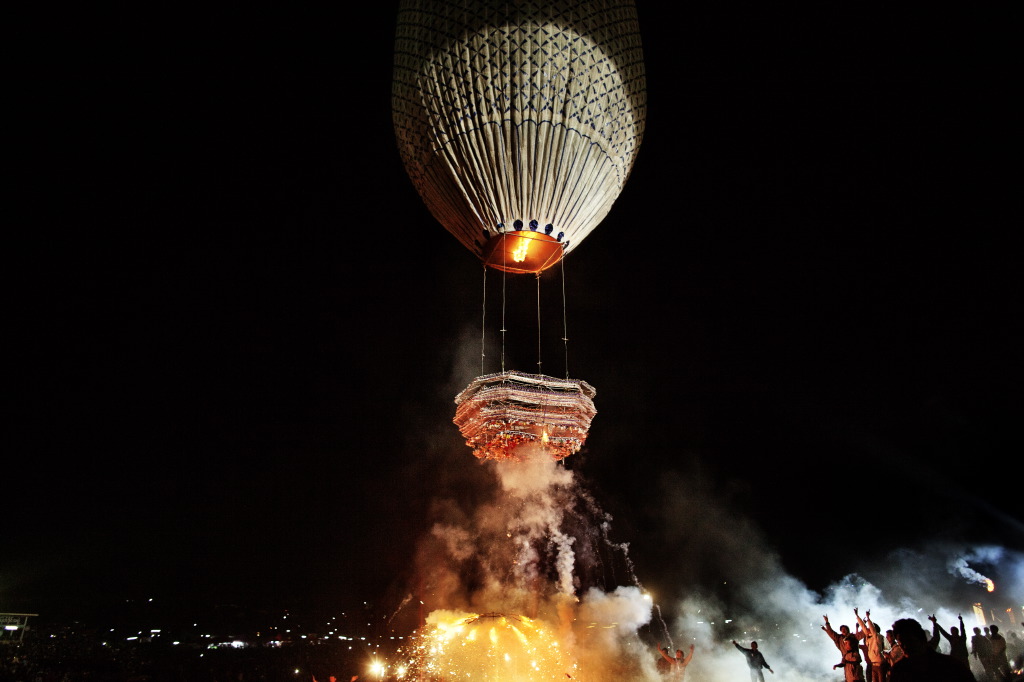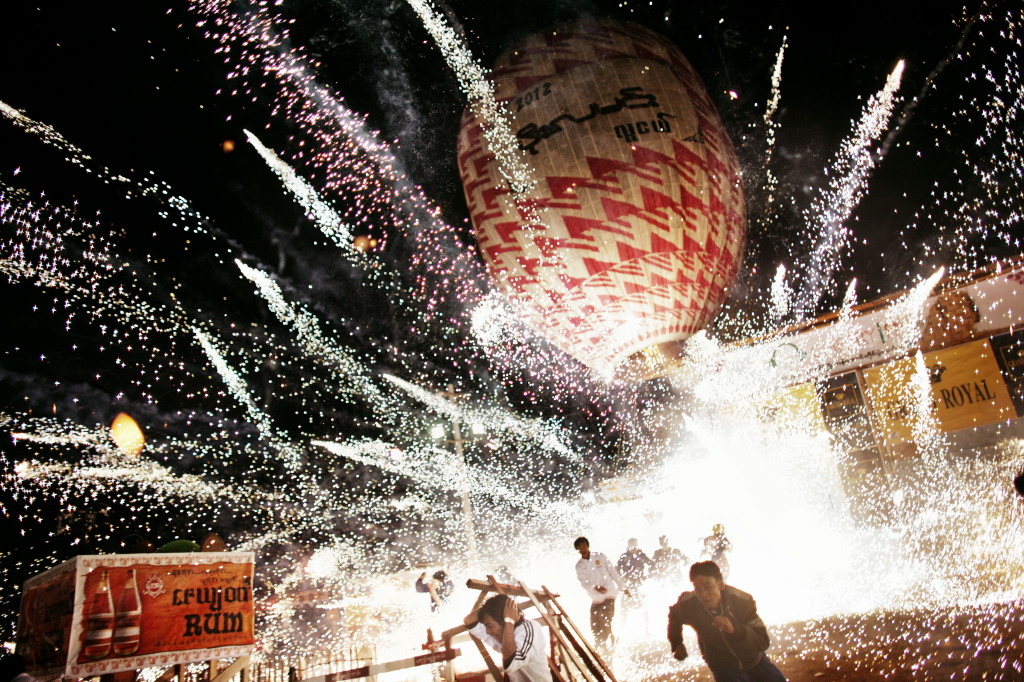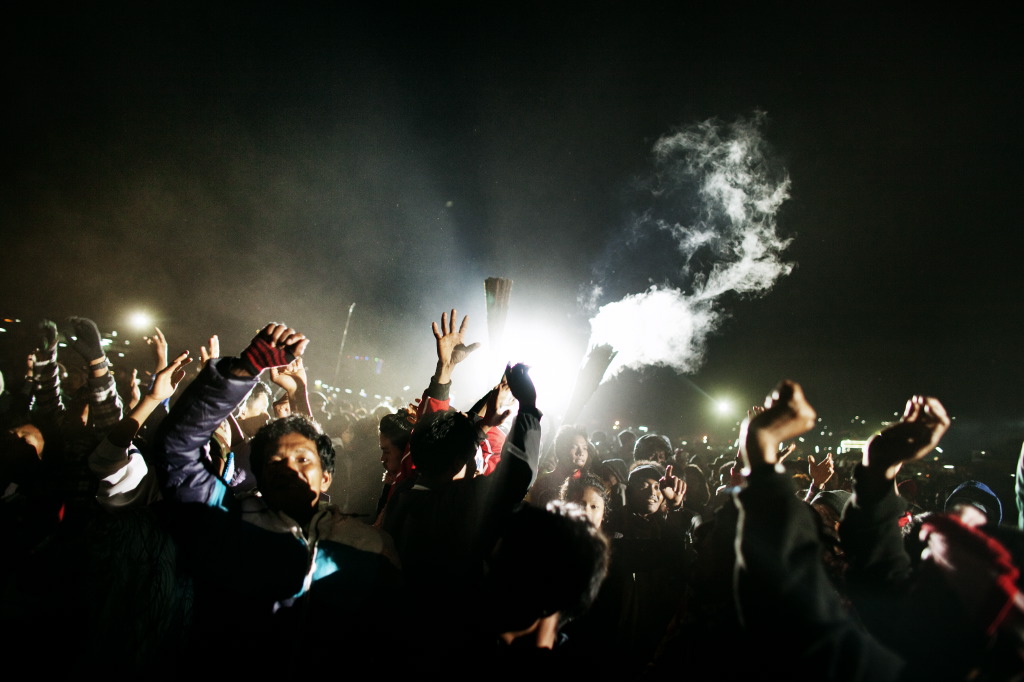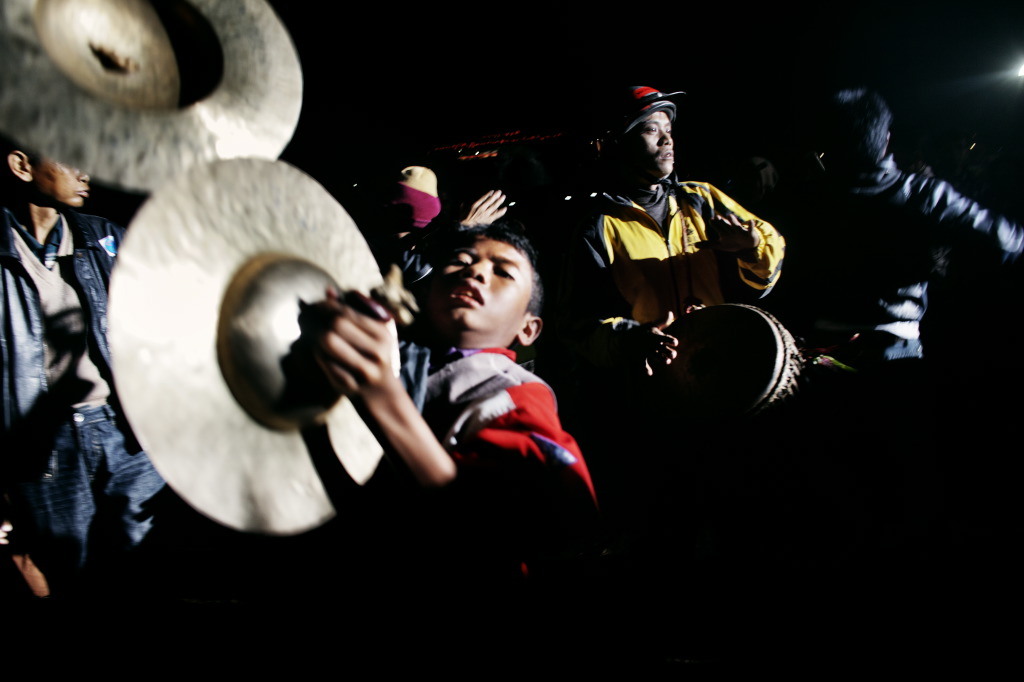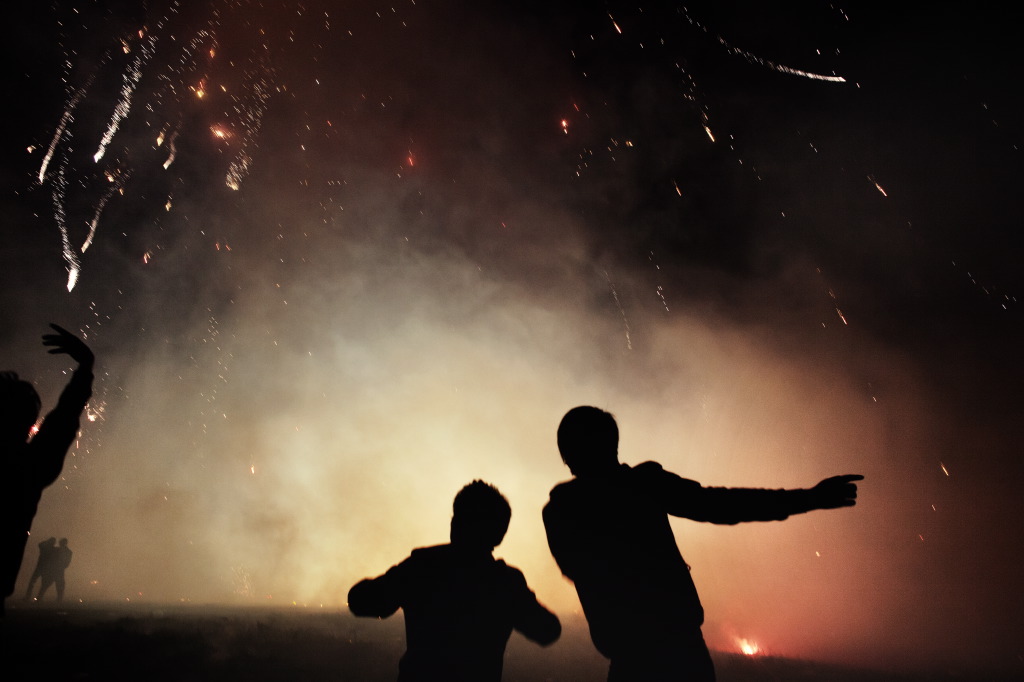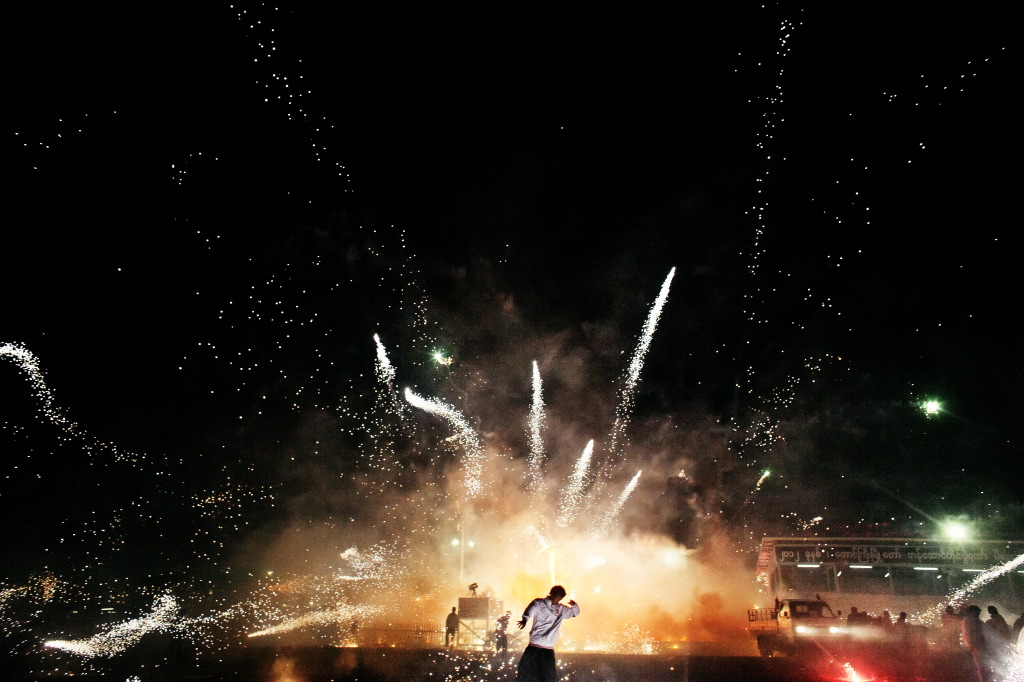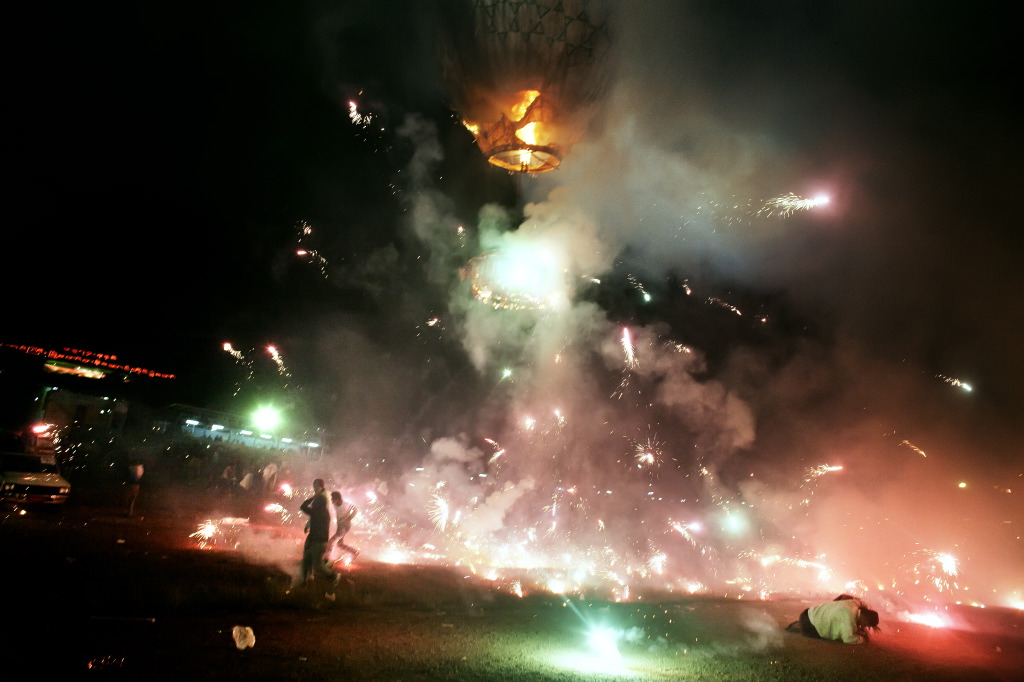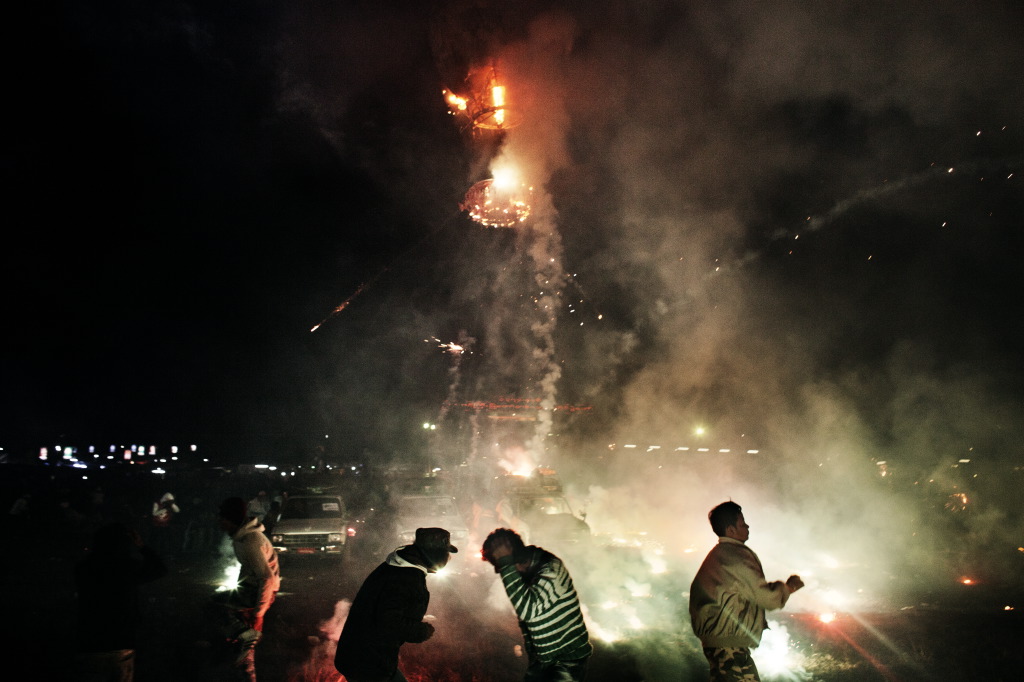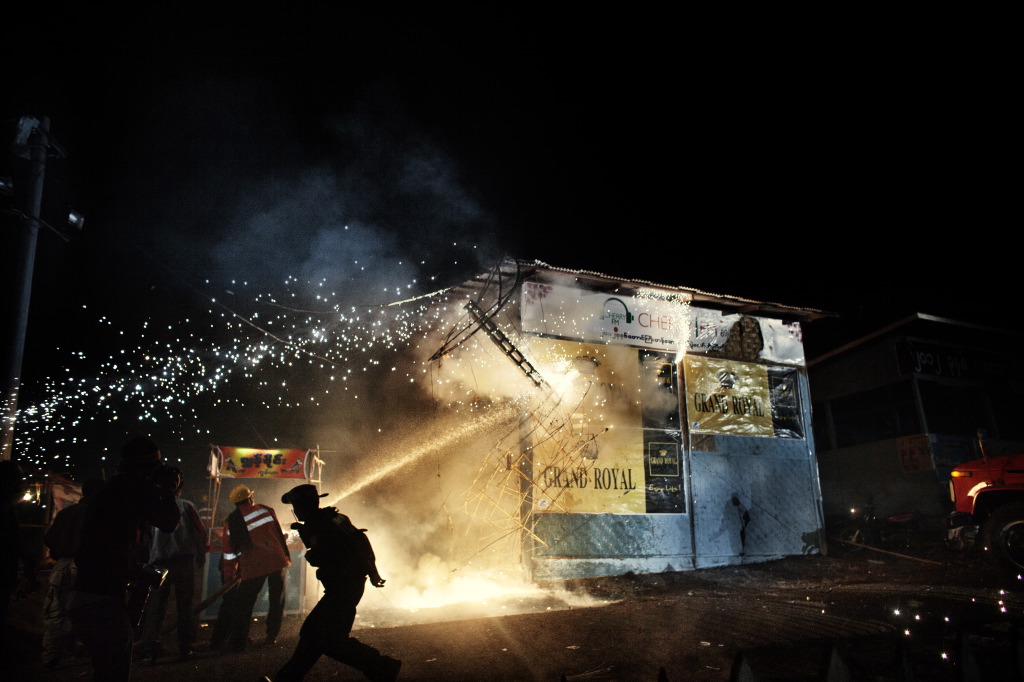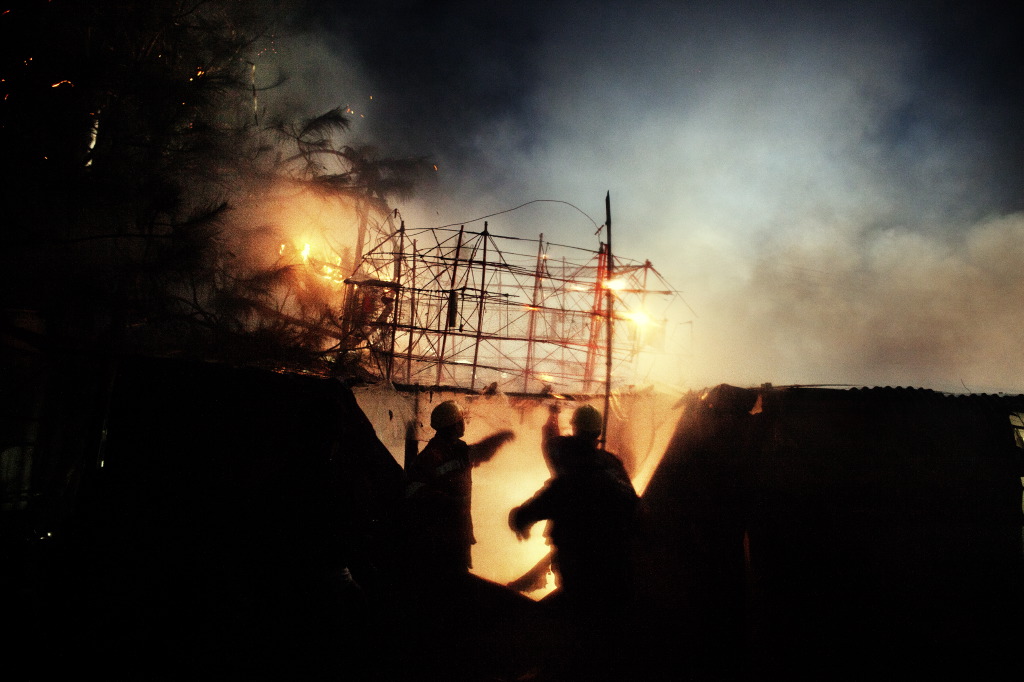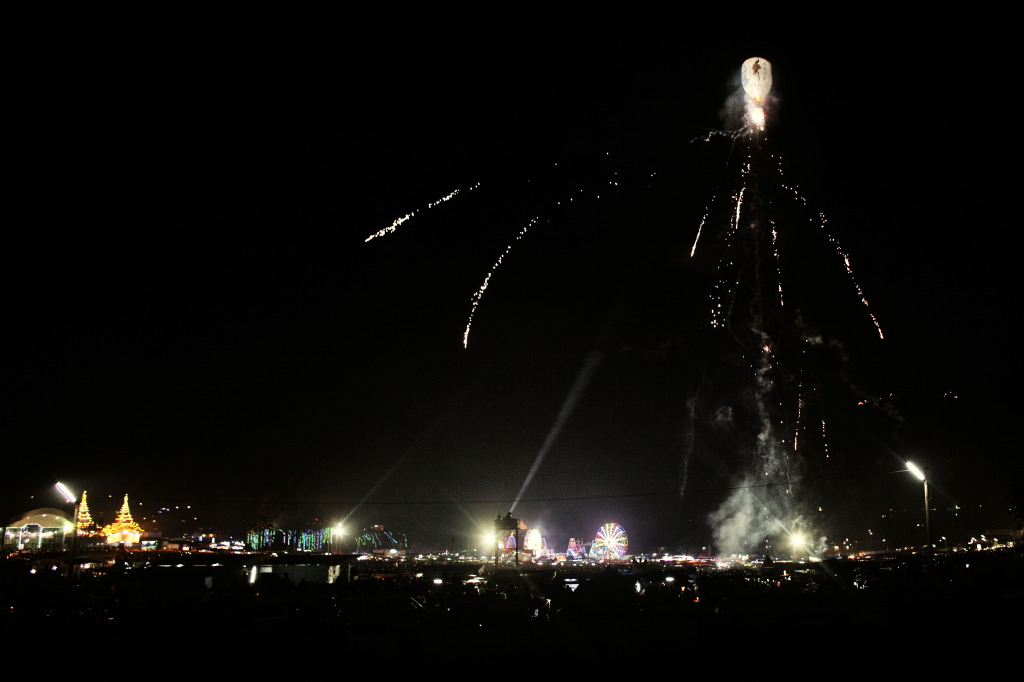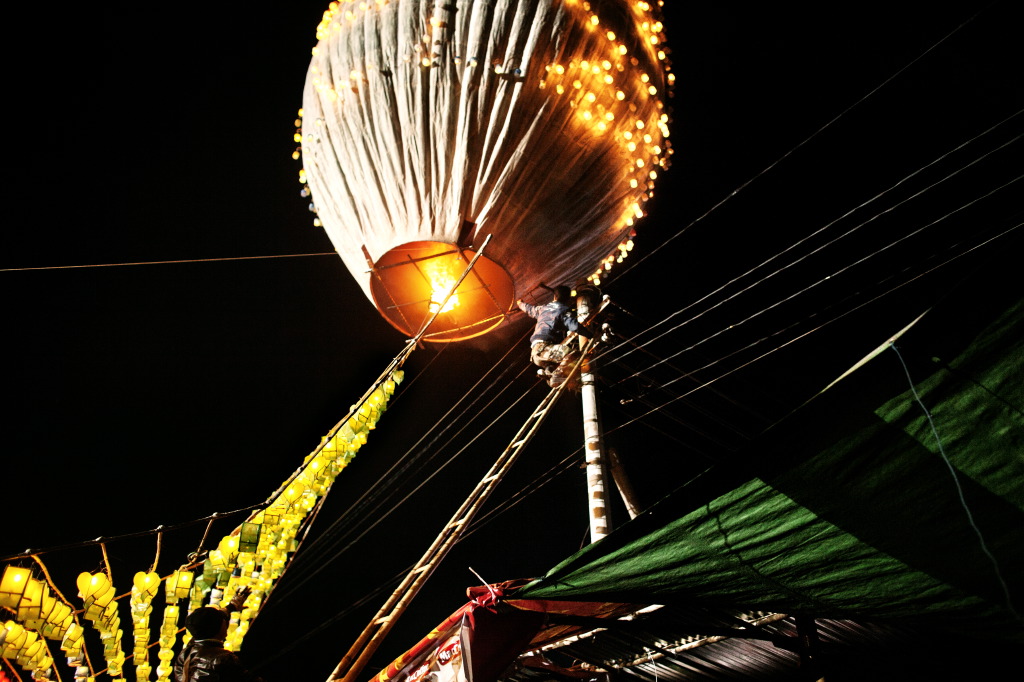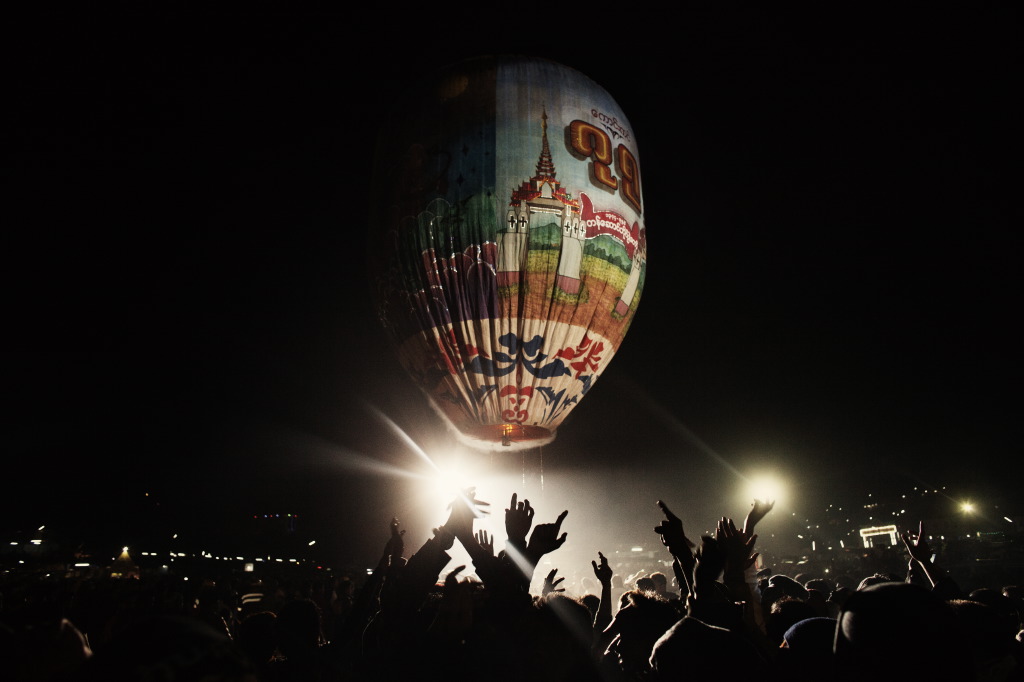X
Every year in November as the full moon approaches, tens of thousands of people from all over the country gather in Taunggyi for the colorful hot-air balloon festival during which balloons lift fireworks or lanterns which illuminate the sky at night. The festival is not immune to pyrotechnic accidents, such as fireworks going off too soon and forcing people to run in every direction. It also happens some hotair ballons full of fireworks collapsed in the air, and fell down and landed in a huge crowd of people. Several people died every year in this celebration. About 100 balloons took part in the festival every year. Many balloons carried as much as 20 viss (72 lbs.) of fireworks or gun powder explosives. Most balloons are around 22-feet high. Tradition calls for balloons to be constructed from Shan Mai-Kai paper, although many are made of cloth. The balloons’ firework displays were brilliant, with some explosives trailing a waterfall effect as a balloon rose into the sky, followed by explosions detonating in a series of bright, colorful flashes. Teams carefully chose various types of fireworks: fireworks that flashed in spiral shapes, fireballs that exploded in bright circles or spiraling flashes, fireworks with a delayed timer and so on. The night sky was repeatedly illuminated and crowds sent up waves of cheers. Balloon teams are all highly organized, led by a balloon master who supervises the fundraising, the purchase of material, the decoration and the launching. Launching a balloon required close teamwork. One group took care of the balloon itself as it was filled with hot air, while another group managed the torches. A third group handled the fireworks to be attached to the balloon. When a balloon positions itself upright after it is full of hot-air, a large torch was affixed underneath the balloon, serving as an engine to power it aloft.
